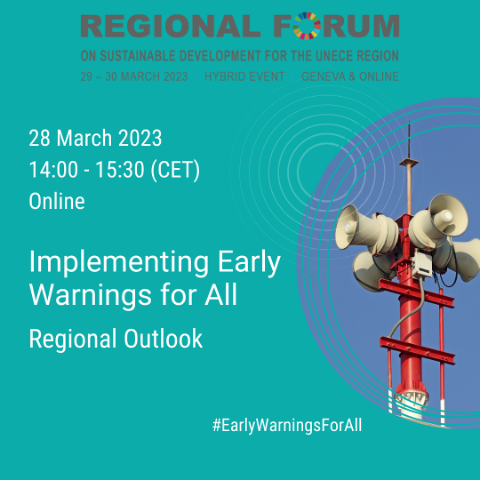Background
Multi-hazard Early Warning Systems (MHEWS) refer to an integrated system of hazard monitoring, forecasting and prediction, disaster risk assessment, communication and preparedness activities systems and processes that enables individuals, communities, governments, businesses and others to take timely action to reduce disaster risks in advance of hazardous events. MHEWSs are a proven, effective, and feasible climate adaptation measure, that save lives being risked by extreme weather events such as floods, drought, heatwaves, and storms. Early warning systems and disaster risk management activities are recognized as key cross-cutting adaptation options, that enhance the benefits of other adaptation measures when combined.
In 2022, the ‘Early Warnings for All (EW4A)’ initiative was proposed by the UN Secretary-General António Guterres to address the challenge that globally one third of citizens are still not covered by early warning systems. About 75% of people in Europe are covered by early warning systems, and many countries in Europe have an above-average capacity to deliver on all their EWS needs. However, some countries have reported having inadequate end-to-end riverine and flash flood forecasting services. This is a concern, considering that in the last 50 years (1970–2019) 38% of the weather, water and climate disasters were related to floods.
Early warning systems are critically required for lifesaving and climate adaptation across sectors during this time of climate crisis. Furthermore, securing early warnings for all contribute to the advancement of the 2030 Agenda, including the Sendai Framework, Paris Agreement, and SDGs (1, 11, and 13).
More Information - EARLY WARNINGS FOR ALL: Executive Action Plan 2023-2027
WMO Regional Office for Europe and UNDRR Regional Office for Europe and Central Asia



